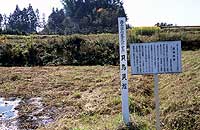
| Pseudonym reading | Other countries |
|---|---|
| Specified type | Prefecture designation |
| Type | Historic site |
| Designated date | March 8, 1966 |
| Specified details | |
| quantity | |
| location | Ichinoseki City Hanasencho Seabowl |
| owner | Outside the individual |
| Holding group | |
| Management organization | |
| home page | Ichinoseki City Board of Education (cultural property of Hanasencho) |
Overview
It is located on a small hill called Independent Island.
The remains are excavated from the middle to late Jomon period and the late Yayoi period, and the shell layer is thin in the middle period, but shell layers formed in the late and late phases remain prominent.
The main shellfish that form shell mounds are freshwater clams, clams, mussels and mussels.
A small amount of clams, clams, clams, abalone and scallops are excavated, and Benkegai, Salbou, Itabogaki etc. are used to make accessories such as shell rings, but all of these are considered to have been brought in .
Fish bones excavated from shell mounds are 11 species such as crucian carp tuna, red sea bream and sea bass, and animal bones are 23 species such as Japanese deer, wild boar, antelope, ten, fox, and Japanese wolf.
In addition, many burial bones and pottery, stone ware, and bone cutlery were excavated as artificial relics.
Remains of each period from the middle of Jomon period to the end and the Yayoi period are left, and it is an invaluable remains as an inland shell mound.
